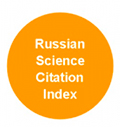Темпы снижения рождаемости возрастают по всему миру: ловушка низкой рождаемости всё вероятнее?
Аннотация
Целью исследования является анализ повышения вероятности реализации модели ловушки низкой рождаемости по сравнению с другими моделями конвергенции рождаемости. Для этого сделаны обзоры основных теоретических представлений в демографии об очень низкой рождаемости, описания типов и моделей конвергенции рождаемости, оценки некоторых последствий реализации этого прогнозного сценария.
В исследовании используется международная база данных Института измерения показателей и оценки здоровья (IHME) по странам и зависимым территориям. Нами был проведен общий анализ трендов коэффициента суммарной рождаемости за 2020-2025 гг.; сделаны расчеты скорректированного коэффициента суммарной рождаемости методом Бонгаартса-Фини за 2020-2025 гг.; проанализированы прогнозные оценки коэффициента суммарной рождаемости и итоговой рождаемости реальных поколений, выполненные ведущими международными организациями, занимающимися долгосрочным демографическим прогнозированием рождаемости (IHME, IIASA и Отдел народонаселения ООН).
Выявлено, что с начала 2010-х годов произошло резкое возрастание темпов снижения рождаемости во всех без исключения государствах мира. Часть этого снижения в демографически развитых государствах может объяснено через новую волну постарения рождаемости (tempo-effect), происходит и снижение интенсивности самого деторождения (quantum-effect). Это явным образом показывает резкое увеличение вероятности реализации ловушки низкой рождаемости.
Прогнозы рождаемости IHME, IIASA и Отдела народонаселения ООН 2023-2024 гг. отражают тенденцию все более активного использования модели ловушки низкой рождаемости при описании возможного будущего рождаемости во всех странах мира. Это дает серьезные основания, чтобы считать, что этот прогнозный сценарий может стать наиболее вероятным для реализации среди всех моделей конвергенции рождаемости.
Скачивания
Литература
Андерсон Б. (2014). Прогнозирование низкой рождаемости: размышления по поводу правдоподобия и применения гипотез. Демографическое обозрение, 1(1), 57-105. https://doi.org/10.17323/demreview.v1i1.1827
Кишенин П.А. (2023). Итоговая рождаемость реальных поколений в демографических прогнозах: сравнительный анализ перспектив изменений в странах бывшего СССР. Демографическое обозрение, 10(1), 79-107. https://doi.org/10.17323/demreview.v10i1.17261
Росстат (2023). Предположительная численность населения Российской Федерации до 2045 года. Retrieved from https://rosstat.gov.ru/compendium/document/13285
Adhikari S., Lutz W., KC S. (2023). Rural/urban fertility differentials in the Global South: Is female education the key driver of declining birth rates? IIASA Working Paper. Laxenburg, Austria: WP-23-004. https://pure.iiasa.ac.at/id/eprint/18729/1/WP-23-004.pdf
Alders M., de Beer J. (2004). Assumptions on fertility in stochastic population forecasts. International Statistical Review, 72(1), 65–79. https://doi.org/10.1111/j.1751-5823.2004.tb00224.x
Anderson T., Kohler H.P. (2015). Low fertility, socioeconomic development, and gender equity. Population and development review, 41(3), 381-407. https://doi.org/10.1111/j.1728-4457.2015.00065.x
Beaujouan E. (2020). Latest-Late Fertility? Decline and Resurgence of Late Parenthood Across the Low-Fertility Countries. Population and Development Review, 46, 219-247. https://doi.org/10.1111/padr.12334
Bergsvik J., Fauske A., Hart R.K. (2021). Can policies stall the fertility fall? A systematic review of the (quasi-) experimental literature. Population and Development Review. 47, 913–964. https://doi.org/10.1111/padr.12431
Bernstein A., Jones K.M. (2019). The economic effects of contraceptive access: a review of the evidence. Washington, DC: Report of Institute for Women’s Policy Research. https://iwpr.org/wp-content/uploads/2020/07/Contraception-fact-sheet_final.pdf
Billari F.C., Graziani R., Melilli E. (2014). Stochastic Population Forecasting Based on Combinations of Expert Evaluations Within the Bayesian Paradigm. Demography, 51(5), 1933–1954.
Bloom D.E., Canning D. (2007). Mortality traps and the dynamics of health transitions. Proceedings of the National Academy of Sciences, 104, 16044–16069. https://doi.org/10.1073/pnas.070201210
Bloom D.E., Kuhn M., Prettner K. (2023). Fertility in High-Income Countries: Trends, Patterns, Determinants, and Consequences. Report of IZA (Institute of Labor Economics Germany), SSRN Electronic Journal. https://docs.iza.org/dp16500.pdf
Bongaarts J., Feeney G. (1998). On the Quantum and Tempo of Fertility. Population and Development Review, 24, 271–291. https://u.demog.berkeley.edu/~jrw/Biblio/Eprints/Tempo/bongaarts.feeney.1998.pdf
Bongaarts J., Sobotka T. (2012). A Demographic Explanation for the Recent Rise in European Fertility. Population and Development Review, 38, 83-120. https://doi.org/10.1111/j.1728-4457.2012.00473.x
Botev N. (2015). Could Pronatalist Policies Discourage Childbearing? Population and Development Review, 41(2), 301–314. https://doi.org/10.1111/j.1728-4457.2015.00048.x
Bourgeois-Pichat J. (1994). La Dynamique des populations. Populations stables semi-stables et quasi stables. (Travaux et Documents). Paris: INED. https://www.ined.fr/fr/publications/editions/cahiers/la-dynamique-des-populations/
Bricker D., Ibbitson J. (2019). Empty planet: the shock of global population decline. New York, NY: Crown.
Brinton M.C., Bueno X., Oláh L., Hellum M. (2018). Postindustrial Fertility Ideals, Intentions, and Gender Inequality: A Comparative Qualitative Analysis. Population and Development Review, 44, 281-309. https://doi.org/10.3197/jps.2019.3.2.87
Castiglioni M., Dalla-Zuanna G., Tanturri M.L. (2020). Post-transitional Demography and Convergence: What Can We Learn from Half a Century of World Population Prospects? In Mazzuco S., Keilman N. (Eds.), Developments in Demographic Forecasting. Springer Cham. Volume 49, The Springer Series on Demographic Methods and Population Analysis book series (pp. 63-87). https://doi.org/10.1215/00703370-9936991
Caswell H., Vindenes Y. (2018). Demographic variance in heterogeneous populations: matrix models and sensitivity analysis. Oikos, 127(5), 648-663. https://doi.org/10.1111/oik.04708
Cheng P.R., Lin E.S. (2010). Completing incomplete cohort fertility schedules. Demographic Research, 23, 223-256. https://doi.org/10.4054/DemRes.2010.23.9
Čipin I., Zeman C., Međimurec P. (2020). Cohort Fertility, Parity Progression, and Family Size in Former Yugoslav Countries. Comparative Population Studies, 45. https://doi.org/10.12765/CPoS-2020-18
Coleman D., Rowthorn R. (2011). Who’s afraid of population decline? A critical examination of its consequences. Population and Development Review, 37, 217–248. https://doi.org/10.1111/j.1728-4457.2011.00385.x
Cook L.J., Iarskaia-Smirnova E.R., Kozlov V.A. (2023). Trying to reverse demographic decline: pro-natalist and family policies in Russia, Poland and Hungary. Social Policy and Society, 22(2), 355-375. https://doi.org/10.1017/S1474746422000628
Dalla Zuanna G., Micheli G. A. (Eds.). (2004). Strong family and low fertility: a paradox?: new perspectives in interpreting contemporary family and reproductive behaviour (Vol. 14). Springer Science & Business Media. https://doi.org/10.1007/1-4020-2837-7
De Silva T., Tenreyro S. (2017). Population control policies and fertility convergence. Journal of Economic Perspectives, 31(4), 205–228. https://doi.org/10.1257/jep.31.4.205
Demeny P. (2015). Sub-replacement fertility in national populations: Can it be raised? Population Studies, 69(Suppl. 1), 77–85. https://doi.org/10.1080/00324728.2014.962930
DHS Tanzania (2022). Ministry of Health (MoH) [Tanzania Mainland], Ministry of Health (MoH) [Zanzibar], National Bureau of Statistics (NBS), Office of the Chief Government Statistician (OCGS), and The DHS Program, ICF, Rockville, Maryland, USA. https://dhsprogram.com/pubs/pdf/FR382/FR382.pdf
DHS Senegal (2023). Agence Nationale de la Statistique et de la Démographie (ANSD), Dakar, Sénégal, and The DHS Program, ICF, Rockville, Maryland, USA. https://dhsprogram.com/pubs/pdf/FR390/FR390.pdf
DHS DRC (2023-2024). INED (France), Institut National de la Statique et l'Ecole de Santé Publique de Kinshasa, Kinshasa, République Démocratique du Congo, and The DHS Program, ICF, Rockville, Maryland, USA. https://dhsprogram.com/pubs/pdf/PR156/PR156.pdf
Dorius S.F. (2008). Global demographic convergence? A reconsideration of changing intercountry inequality in fertility. Population and Development Review, 34(3), 519–537. https://doi.org/10.1111/j.1728-4457.2008.00235.x
Durowaa-Boateng A., Yildiz D., Goujon A. (2023). A Bayesian model for the reconstruction of education- and age-specific fertility rates: An application to African and Latin American countries. Demographic Research, 49 (31), 809-848. https://doi.org/10.4054/DemRes.2023.49.31
Ediev D.M. (2013). Comparative importance of the fertility model, the total fertility, the mean age and the standard deviation of age at childbearing in population projections. In Meeting of the International Union for the Scientific Study of Population, Busan. Presented at the Meeting of the International Union for the Scientific Study of Population, Busan. https://iussp.org/sites/default/files/event_call_for_papers/TF%20MS%20SD_what%20matters_StWr.pdf
Frejka T. (2017). The Fertility Transition Revisited: A Cohort Perspective. Comparative Population Studies, 42. https://doi.org/10.12765/CPoS-2017-09
Gietel-Basten S., Sobotka T., Zeman K. (2014). Future fertility in low fertility countries. In W. Lutz, W.P. Butz, KC. Samir (Eds.), World population and human capital in the twenty-first century (pp. 136-244). Oxford: Oxford University Press. https://doi.org/10.1093/oso/9780198813422.001.0001
Gietel-Basten S., Scherbov S. (2020). Exploring the « true value» of replacement rate fertility. Population Research and Policy Review, 39, 763-772. https://doi.org/10.1007/s11113-019-09561-y
Guzzo K.B., Hayford S.R. (2023). Evolving Fertility Goals and Behaviors in Current U.S. Childbearing Cohorts. Population and Development Review, 4, 7-42. https://doi.org/10.1111/padr.12535
Hakim C. (1998). Developing a sociology for the twenty-first century: Preference Theory. The British journal of sociology, 49(1), 137-143. https://doi.org/10.2307/591267
Hellstrand J., Nisén J., Myrskylä M. (2020). All-Time Low Period Fertility in Finland: Demographic Drivers, Tempo Effects, and Cohort Implications. Population Studies, 74(3), 315–329. https://doi.org/10.1080/00324728.2020.1750677
Hellstrand J., Nisén J., Miranda V., Fallesen P., Dommermuth L., Myrskylä M. (2021). Not Just Later, but Fewer: Novel Trends in Cohort Fertility in the Nordic Countries. Demography, 58(4), 1373–1399. https://doi.org/10.1215/00703370-9373618
Hou Y., Ma X., Huang K. (2008). Research on the fertility desire and behavior of Beijing urban women from only-child families (in Chinese). Population and Development (China), 14, 47-54.
Hwang J. (2023). Later, Fewer, None? Recent Trends in Cohort Fertility in South Korea. Demography, 60(2), 563–582. https://doi.org/10.1215/00703370-10585316
Jalovaara M., Neyer G., Andersson G., Dahlberg J., Dommermuth L., Fallesen P., Lappegård T. (2019). Education, Gender, and Cohort Fertility in the Nordic Countries. European Journal of Population, 35(1), 563-586. https://doi.org/10.1007/s10680-018-9492-2
Jones G.W. (2019). Ultra-low fertility in East Asia: policy responses and challenges*. Asian Population Studies, 15(2), 131–149. https://doi.org/10.1080/17441730.2019.1594656
IHME GBD 2019 Demographics Collaborators (2020). Global age-sex-specific fertility, mortality, healthy life expectancy (HALE), and population estimates in 204 countries and territories, 1950–2019: a comprehensive demographic analysis for the Global Burden of Disease Study 2019. The Lancet, 396(10258), 1160-1203. https://doi.org/10.1016/S0140-6736(20)30977-6
IHME GBD 2019 Demographics Collaborators (2021). Global Fertility, Mortality, Migration, and Population Forecasts 2017-2100. Retrieved from https://ghdx.healthdata.org/record/ihme-data/global-population-forecasts-2017-2100
IHME GBD 2021 Fertility and Forecasting Collaborators (2024a). Global fertility in 204 countries and territories, 1950–2021, with forecasts to 2100: a comprehensive demographic analysis for the Global Burden of Disease Study 2021. The Lancet, 403(10440), 2057-2099. https://doi.org/10.1016/S0140-6736(24)00550-6
IHME Global Burden of Disease Collaborative Network. Global Burden of Disease Study 2021 (2024b). Fertility Estimates 1950-2021 and Forecasts 2022-2100. Seattle, United States of America: Institute for Health Metrics and Evaluation (IHME). Retrieved from https://ghdx.healthdata.org/record/ihme-data/global-burden-disease-study-2021-gbd-2021-fertility-1950-2100
IIASA (2018). Global population projections to 2100 year. Retrieved from http://dataexplorer.wittgensteincentre.org/wcde-v2/
IIASA (2024). Global population projections to 2100 year. Retrieved from https://dataexplorer.wittgensteincentre.org/wcde-v3/
Kan M.Y., Hertog E. (2017). Domestic division of labour and fertility preference in China, Japan, South Korea, and Taiwan. Demographic Research, 36(18), 557-588. https://doi.org/10.4054/DemRes.2017.36.18
Kan M. (2023). Sustained and universal fertility recuperation in Kazakhstan. European Journal of Population, 39(1), 23, 1-39. https://doi.org/10.1007/s10680-023-09671-6
KC S., Moradhvaj M., Potančoková M., Adhikari S., Yildiz D., Mamolo M., Sobotka T., Zeman K., Abel G., Goujon, A. et al. (2023). IIASA and Wittgenstein Center (WIC) Population and Human Capital Projections - 2023. https://zenodo.org/records/10618931
KC S., Dhakad M., Potančoková M., Adhikari S., Yildiz D., Mamolo M., Sobotka T., Zeman K., et al. (2024). Updating the Shared Socioeconomic Pathways (SSPs) Global Population and Human Capital Projections. IIASA Working Paper. Laxenburg, Austria: WP-24-003. https://pure.iiasa.ac.at/id/eprint/19487/1/WP-24-003.pdf
Keiding N., Ali M.M., Eriksson F., Matsaseng T., Toskin I., Kiarie J. (2021). The Use of Time to Pregnancy for Estimating and Monitoring Human Fecundity From Demographic and Health Surveys. Epidemiology, 32(1), 27-35. https://doi.org/10.1097/EDE.0000000000001296
Keilman N. (2019). Erroneous population forecast. In Bengtsson T., Keilman N. (Eds.), Old and new perspectives on mortality forecasting. Demographic research monographs (A series of the Max Planck Institute for Demographic Research). Cham: Springer. https://doi.org/10.1007/978-3-030-05075-7
Kohler H.P., Billari F., Ortega J. A. (2002). The emergence of Lowest-Low fertility in Europe during the 1990s. Population and Development Review, 28(4), 641–680. https://doi.org/10.1111/j.1728-4457.2002.00641.x
Lazzari E., Potančoková M., Sobotka T., Gray E., Chambers G.M. (2023). Projecting the Contribution of Assisted Reproductive Technology to Completed Cohort Fertility. Population Research and Policy Review, 42(1). https://doi.org/10.1007/s11113-023-09765-3
Livi-Bacci M. (2017). A concise history of world population. Chichester: Wiley-Blackwell. https://doi.org/10.1002/9781119406822
Lutz W. (1996). The future population of the World. What can we assume today? IIASA, Laxenburg, Austria. https://pure.iiasa.ac.at/id/eprint/4762/1/XB-96-003.pdf
Lutz W., Skirbekk V. (2005). Policies Addressing the Tempo Effect in Low-Fertility Countries. Population and Development Review, 31(4), 699–720. https://doi.org/10.1111/j.1728-4457.2005.00094.x
Lutz W., Skirbekk V., Testa M.R. (2006). The Low-Fertility Trap Hypothesis: Forces that May Lead to Further Postponement and Fewer Births in Europe. Vienna Yearbook of Population Research, 4, 167–192. https://pure.iiasa.ac.at/id/eprint/8465/1/RP-07-001.pdf
Lutz W. (2009). Toward a systematic, argument-based approach to defining assumptions for population projections (Interim report IR-09-037). Laxenburg: International Institute for Applied Systems Analysis. https://pure.iiasa.ac.at/id/eprint/9115/1/IR-09-037.pdf
Lutz W., Scherbov S., Gietel-Basten S. (2013). Very long range global population scenarios to 2300 and the implications of sustained low fertility. Demographic Research, 28(39), 1145-1166. https://doi.org/10.4054/DemRes.2013.28.39
Lutz W., Butz W.P., KC S. (Eds.) (2014). World Population and Human Capital in the Twenty-First Century. Oxford University Press. https://doi.org/10.1093/oso/9780198813422.001.0001
Lutz W., Goujon A., KC S., Stonawski M., Stilianakis N. (2018). Demographic and Human Capital Scenarios for the 21st Century: 2018 assessment for 201 countries. Luxembourg (EUR 29113 EN, Publications Office of the European Union). https://op.europa.eu/en/publication-detail/-/publication/e1853ba8-4444-11e8-a9f4-01aa75ed71a1/language-en
Lutz W., Pachauri S. (2023). Systems Analysis for Sustainable Wellbeing. 50 Years of IIASA Research, 40 Years After the Brundtland Commission, Contributing to the Post-2030 Global Agenda. Laxenburg: International Institute for Applied Systems Analysis. https://doi.org/10.5281/zenodo.8214208
Mazzuco S., Keilman N. (2020). Developments in Demographic Forecasting. Springer Cham. Volume 49, The Springer Series on Demographic Methods and Population Analysis book series. https://doi.org/10.1215/00703370-9936991
McDonald P. (2000). Gender Equity in Theories of Fertility Transition. Population and Development Review, 26: 427-439. https://doi.org/10.1111/j.1728-4457.2000.00427.x
MICS Nigeria (2021-2022). UNICEF. https://mics-surveys-prod.s3.amazonaws.com/MICS6/West%20and%20Central%20Africa/Nigeria/2021/Survey%20findings/Nigeria%202021_MICS_SFR_English.pdf
Myrskylä M., Goldstein J.R., Cheng Y.A. (2013). New Cohort Fertility Forecasts for the Developed World: Rises, Falls, and Reversals. Population and Development Review, 39(1), 31–56. https://www.demogr.mpg.de/papers/working/wp-2012-014.pdf
Neyer G., Lappegård T., Vignoli D. (2013). Gender Equality and Fertility: Which Equality Matters? Egalité de genre et fécondité: de quelle égalité s’ agit-il? European Journal of Population/Revue européenne de Démographie, 29, 245-272. https://doi.org/10.1007/s10680-013-9292-7
Neyer G., Caporali A., Gassen N. S. (2017). EU-Policies and Fertility: The Emergence of Fertility-Related Family Policies at the Supra-National Level. Stockholm Research Reports in Demography 10, Stockholm University, Demography Unit. http://www.familiesandsocieties.eu/wp-content/uploads/2017/06/WP79NeyerCaporaliGasse2017.pdf
Okun B. (2013). Fertility and marriage behavior in Israel: Diversity, change, and stability. Demographic Research, 28(17), 457-504. https://doi.org/10.4054/DemRes.2013.28.17
Okun B., Shifris G. (2024). Cohort fertility of immigrants to Israel from the former Soviet Union. Demographic Research, 50(13), 377-392. https://doi.org/ 10.4054/DemRes.2024.50.13
Pelletier F. (2021). A sensitivity analysis of the projected median fertility trajectories in the WPP: towards a better understanding and reassessment of the Bayesian model. The United Nations, Department of Economic and Social Affairs, Population Division. Working Paper (May 2021). (UN DESA/POP/2021/TP/NO.1). https://desapublications.un.org/working-papers/sensitivity-analysis-projected-median-fertility-trajectories-world-population
Poston J.D.L. (2018). Low Fertility Regimes and Demographic and Societal Change. Springer Heidelberg. https://doi.org/10.1007/978-3-319-64061-7
Reher D.R. (2019). The Aftermath of the demographic transition in the developed world: Interpreting enduring disparities in reproductive behavior. Population and Development Review, 47(2), 475-503. https://doi.org/10.1111/padr.12266
Reiter, C., Goujon, A., KC, S. (2022). The Demography of Human Capital Formation in Sub-Saharan Africa, 1950-2100. In Odimegwu C., Adewoyin Y. (Eds.), The Routledge Handbook of African Demography. (pp. 591-615). Cham: Routledge. https://doi.org/10.4324/9780429287213-39
Rindfuss R.R., Choe M.K. (2015). Low and Lower Fertility: Variations across Developed Countries. Cham, Switzerland: Springer International Publishing. https://doi.org/10.1007/978-3-319-21482-5
Rindfuss R.R., Choe M.K. (2016). Low Fertility, Institutions, and their Policies: Variations Across Industrialized Countries. Cham, Switzerland: Springer International Publishing. https://doi.org/ 10.1007/978-3-319-32997-0
Rindfuss R.R., Choe M.K., Brauner-Otto S.R. (2016). The Emergence of Two Distinct Fertility Regimes in Economically Advanced Countries. Population Research and Policy Review, 35(3), 287-304. https://doi.org/10.1007/s11113-016-9387-z
Sanderson W.C., Lutz W., Scherbov S. (1996). Probabilistic world population projections based on expert opinion. Laxenburg: International Institute for Applied Systems Analysis. https://pure.iiasa.ac.at/id/eprint/5008/1/WP-96-017.pdf
Schleutker E. (2013). Fertility, Family Policy and Welfare Regimes. Comparative Population Studies. 39, 1. https://doi.org/10.12765/CPoS-2013-18
Schoen R. (2022). Relating period and cohort fertility. Demography, 59, 877-894. https://doi.org/10.1215/00703370-9936991
Ševcíková H., Li N., Kantorová V., Gerland P., Raftery A.E. (2016). Age-specific mortality and fertility rates for probabilistic population projections. In Schoen R. (Eds.), Dynamic demographic analysis (pp. 285–310). Cham: Springer. https://doi.org/10.1007/978-3-319-26603-9_15
Schmertmann C., Zagheni E., Goldstein J.R., Myrskylä M. (2014). Bayesian Forecasting of Cohort Fertility. Journal of the American Statistical Association, 109(506), 500-513. https://doi.org/10.1080/01621459.2014.881738
Sobotka T., Lutz W (2011). Misleading Policy Messages Derived from the Period TFR: Should We Stop Using It?. Comparative Population Studies, 35(3) (Sep. 2011). https://doi.org/10.12765/CPoS-2010-15
Sobotka T. (2017). Post-transitional fertility: the role of childbearing postponement in fueling the shift to low and unstable fertility levels. Journal of Biosocial Science, 49(1), 20-45. https://doi.org/10.1017/S0021932017000323
Sobotka T., Matysiak A., Brzozowska Z. (2017). Gender revolution, family reversal and fertility. Paper presented at IUSSP Population Conference, Cape Town. https://www.eurrep.org/wp-content/uploads/RC28_Gender-revolution-family.pdf
Sobotka T. (2018). Global low fertility: Key trends. Report of International Seminar on Indicators and. Policies on Low Fertility, KOSIS-UNFPA: Seoul. https://www.researchgate.net/publication/330602019_Global_low_fertility_Key_trends
Sobotka T, Matyziak A, Brzozowska Z. (2019). Policy responses to low fertility: how effective are they? Working Paper for UNFPA. Paris, France. https://www.unfpa.org/publications/policy-responses-low-fertility-how-effective-are-they
United Nations, Department of Economic and Social Affairs, Population Division (2004). World Population to 2300 year. (United Nations publication 2004, Sales No. E.04.XIII.11). Retrieved from https://www.un.org/development/desa/pd/sites/www.un.org.development.desa.pd/files/files/documents/2020/Jan/un_2002_world_population_to_2300.pdf
United Nations, Department of Economic and Social Affairs, Population Division (2020). World Population Prospects. The 2019 Revision, vol. I: Comprehensive Tables. (United Nations publication, Sales No. E.20.XIII.7). Retrieved from https://population.un.org/wpp2019/
United Nations, Department of Economic and Social Affairs, Population Division (2022). World Population Prospects. The 2022 Revision, vol. I: Comprehensive Tables. (United Nations publication, Sales No. E.22.XIII.7). Retrieved from https://population.un.org/wpp2022/
United Nations, Department of Economic and Social Affairs, Population Division (2024a). World Population Prospects 2024: Summary of Results. UN DESA/POP/2024. https://population.un.org/wpp/Publications/
United Nations, Department of Economic and Social Affairs, Population Division (2024b). World Population Prospects 2024. UN DESA/POP/2024. https://population.un.org/wpp/Download/
van Dalen H. P., Henkens K. (2020). When is fertility too low or too high? Population policy preferences of demographers around the world. Population Studies, 75(2), 289–303. https://doi.org/10.1080/00324728.2020.1784986
Vollmer S., Strulik H. (2015). The fertility transition around the world. Journal of Population Economics, 28(1),31-144. https://doi.org/10.1007/s00148-013-0496-2
Vollset S.E., Goren E., Yuan C.W., Cao J., Smith A.E., Hsiao T., Murray C.J. (2020). Fertility, mortality, migration, and population scenarios for 195 countries and territories from 2017 to 2100: a forecasting analysis for the Global Burden of Disease Study. The Lancet, 396(10258), 1285-1306. https://doi.org/10.1016/S0140-6736(20)30677-2
Whittaker A. (2022). Demodystopias: Narratives of ultra-low fertility in Asia. Economy and Society, 51, 116-137. https://doi.org/10.1080/03085147.2021.1968672
Wilkins E. (2019). Policy responses to low fertility: How effective are they? Working Paper №2 for UNFPA. Paris, France. https://www.unfpa.org/sites/default/files/pub-pdf/FINAL_Determinants_of_low_fertility.pdf
Wilson C. (2011). Understanding global demographic convergence since 1950. Population and Development Review, 37(2), 375–388. https://doi.org/10.2307/23043287
Wilson C. (2013). Thinking about post-transitional demographic regimes: A reflection. Demographic Research, 28, 1373-1388. https://doi.org/10.4054/DemRes.2013.28.46
Winkler-Dworak M., Pohl M., Beaujouan E. (2024). Scenarios of Delayed First Births and Associated Cohort Fertility Levels. Demography, 61(3), 687-710. https://doi.org/10.1215/00703370-11315685
World Bank, Eurostat (2010). Long-Range World Population Projections to 2150 year. Retrieved from https://www.vsemirnyjbank.org/ru/access-to-information/request-submission
Zakharov S.V. (2024). Three Decades on Russia’s Path of the Second Demographic Transition: How Patterns of Fertility are Changing Under an Unstable Demographic Policy. Comparative Population Studies, 49 (Jan. 2024). https://doi.org/10.12765/CPoS-2024-02
























